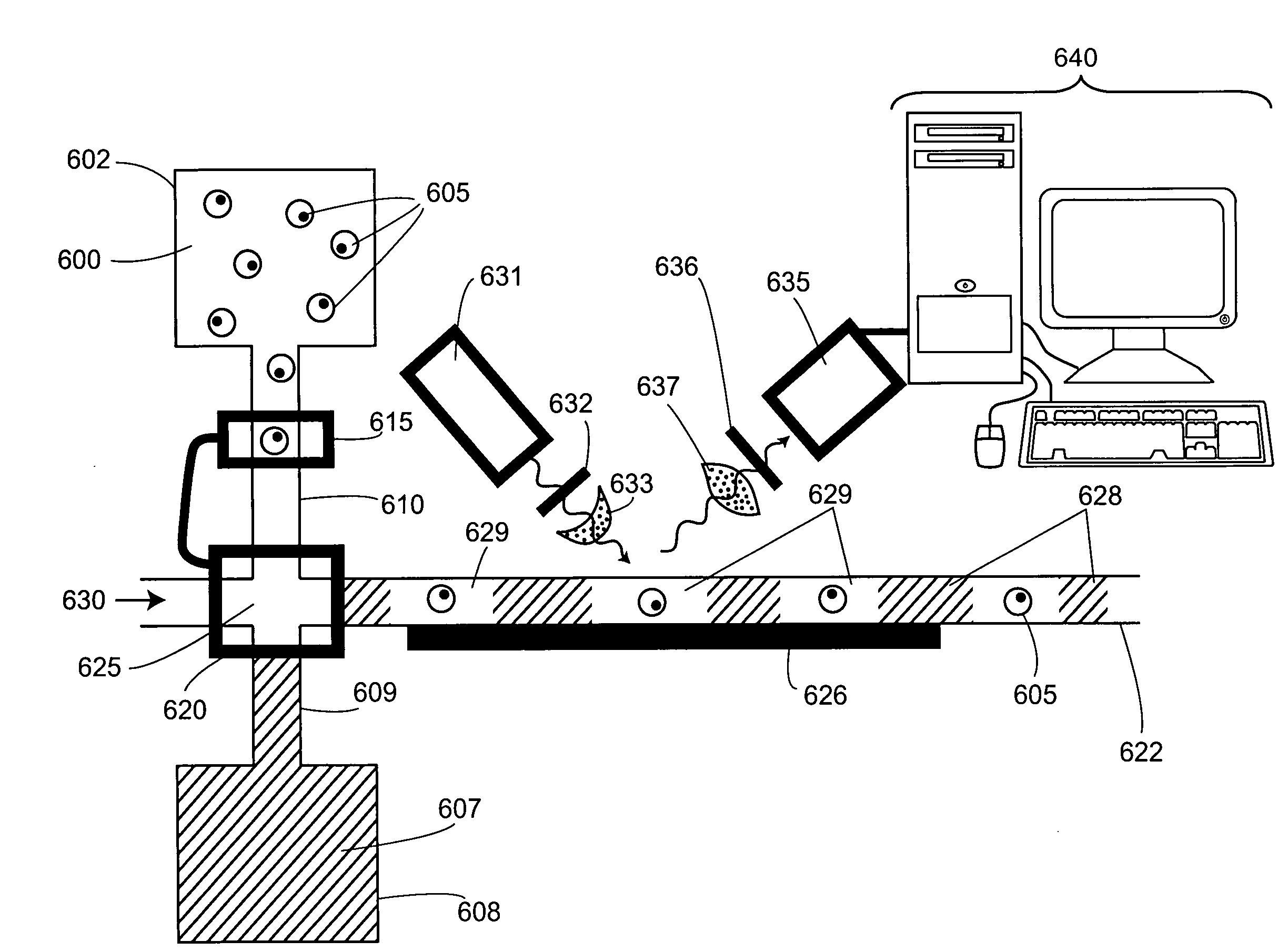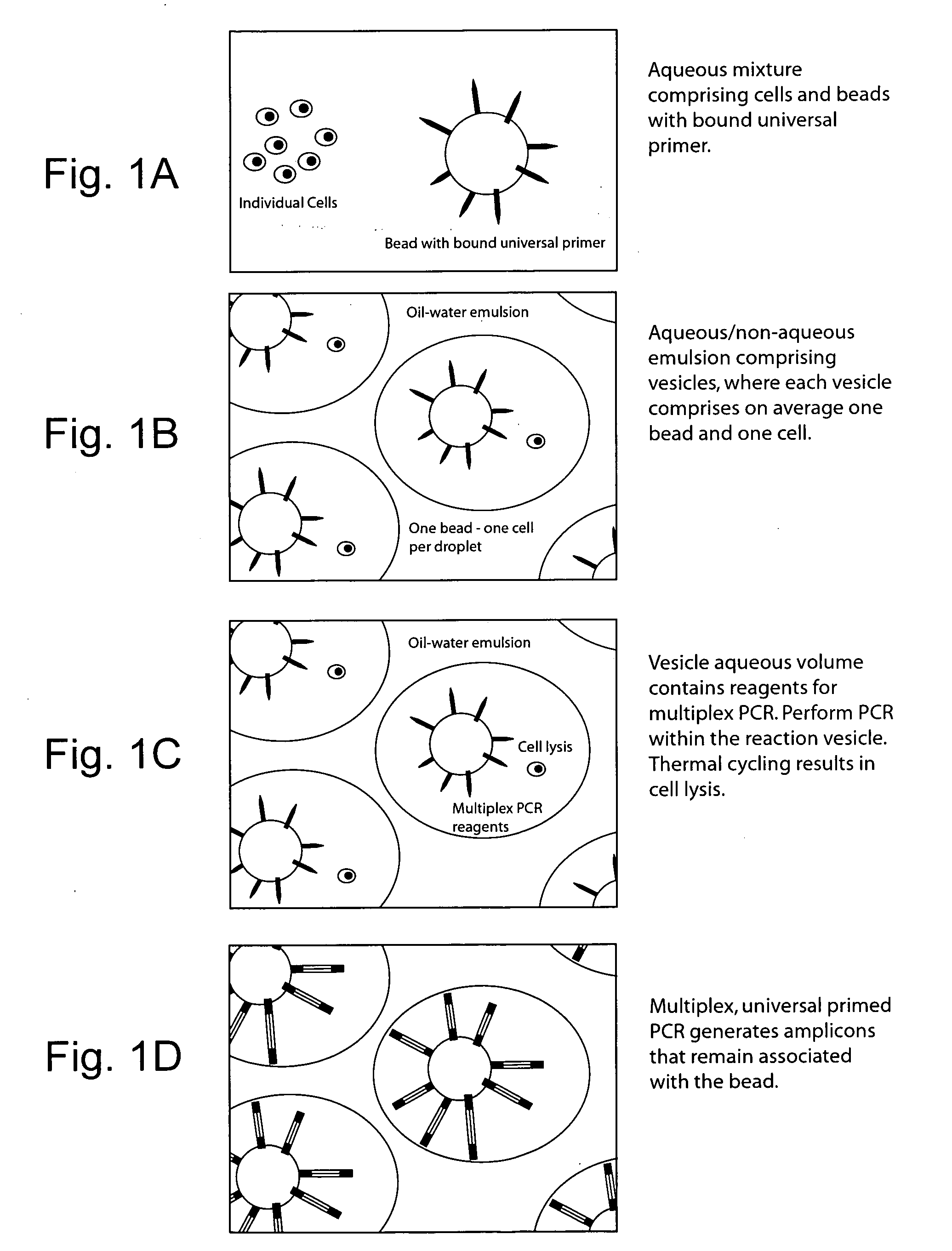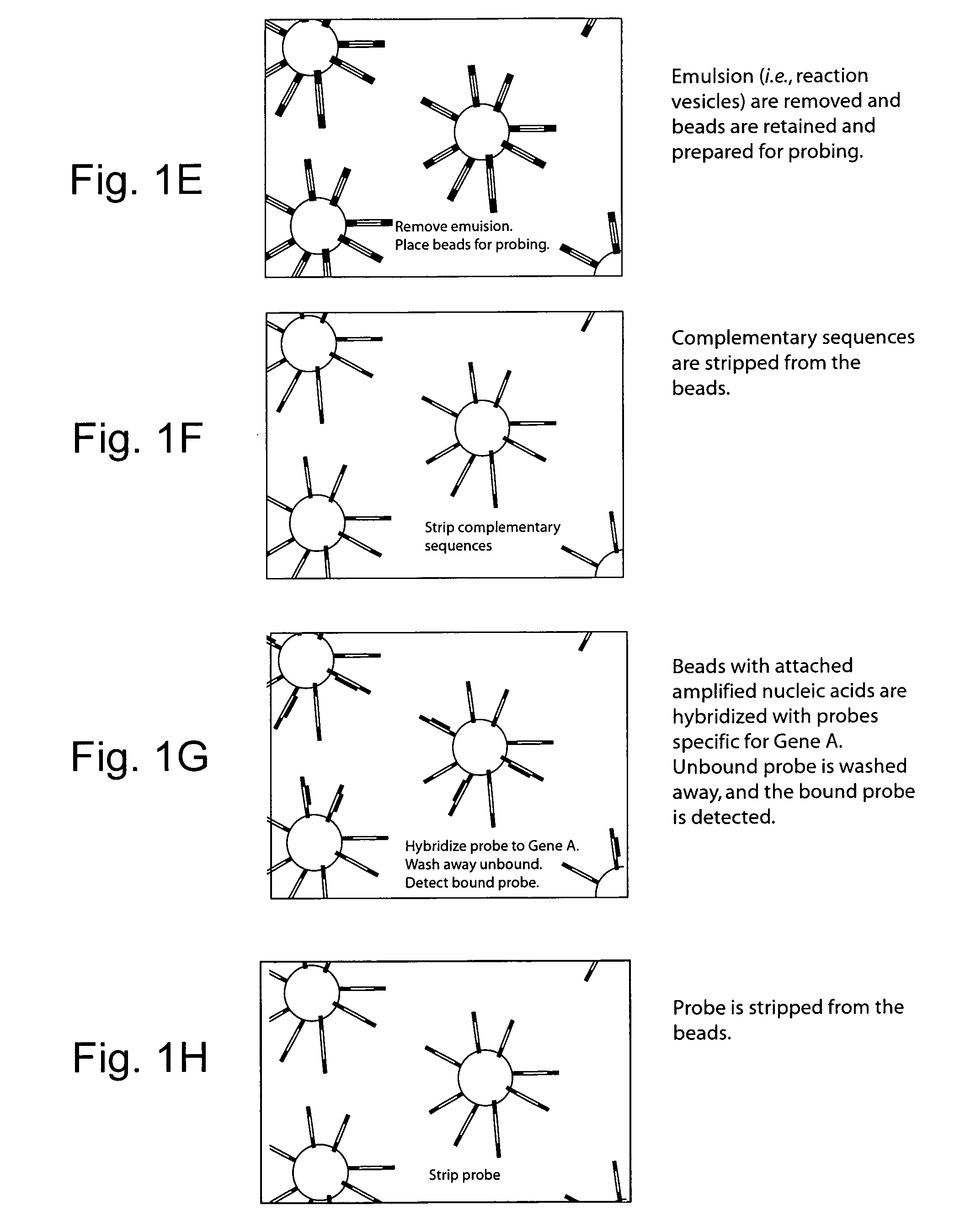Biochemical analysis of partitioned cells
- Summary
- Abstract
- Description
- Claims
- Application Information
AI Technical Summary
Benefits of technology
Problems solved by technology
Method used
Image
Examples
Embodiment Construction
[0093]The present invention provides compositions and methods for monitoring (e.g., detecting, quantitating, assaying) a plurality of biomolecules (e.g., proteins or nucleic acids) within or otherwise associated with individual cells or small groups of cells. In particularly advantageous embodiments, these compositions and methods for monitoring biomolecules associated with cells are used in high-throughput methodologies for the rapid assessment of large numbers of single cells. One of the beneficial features of the invention is the ability to apply analytical techniques to large numbers of single cells, thereby enabling the determination of a distribution of a particular characteristic in a population of individual cells, and not simply the population average of that particular trait.
Cell Partitioning
[0094]The compositions and methods of the invention rely on various mechanisms to partition single cells into individual reaction volumes where a biochemical analysis can be performed ...
PUM
| Property | Measurement | Unit |
|---|---|---|
| Temperature | aaaaa | aaaaa |
| Composition | aaaaa | aaaaa |
| Volume | aaaaa | aaaaa |
Abstract
Description
Claims
Application Information
 Login to View More
Login to View More - R&D
- Intellectual Property
- Life Sciences
- Materials
- Tech Scout
- Unparalleled Data Quality
- Higher Quality Content
- 60% Fewer Hallucinations
Browse by: Latest US Patents, China's latest patents, Technical Efficacy Thesaurus, Application Domain, Technology Topic, Popular Technical Reports.
© 2025 PatSnap. All rights reserved.Legal|Privacy policy|Modern Slavery Act Transparency Statement|Sitemap|About US| Contact US: help@patsnap.com



